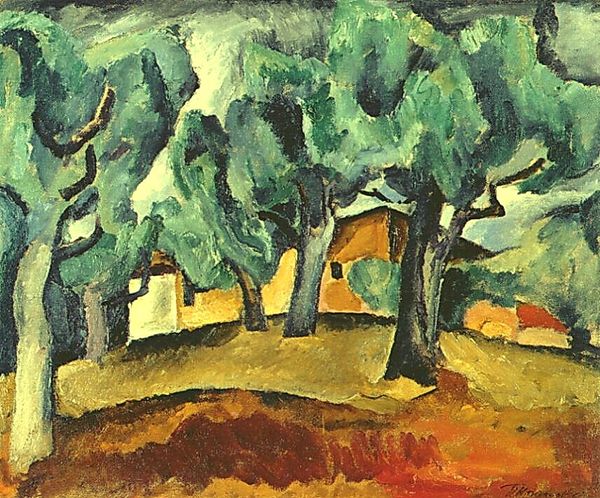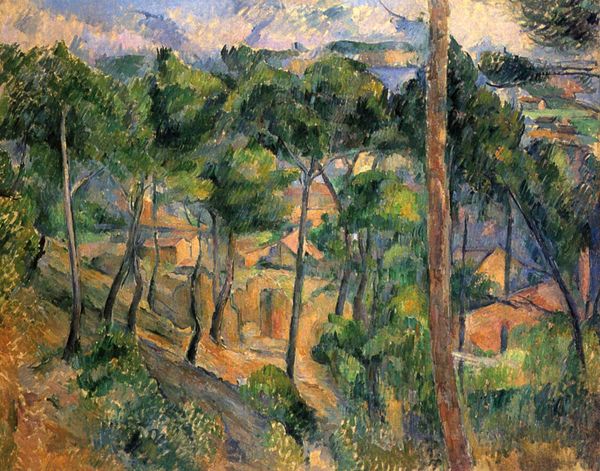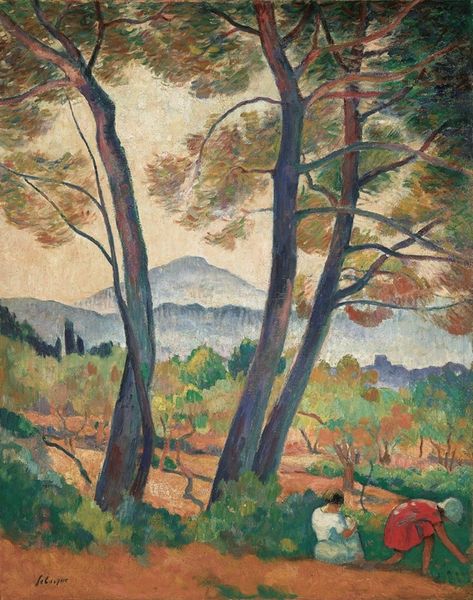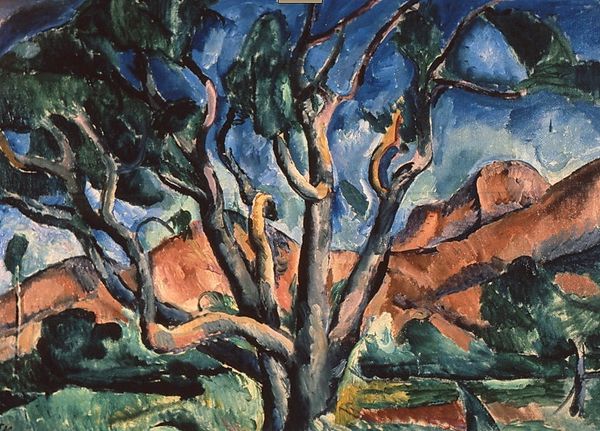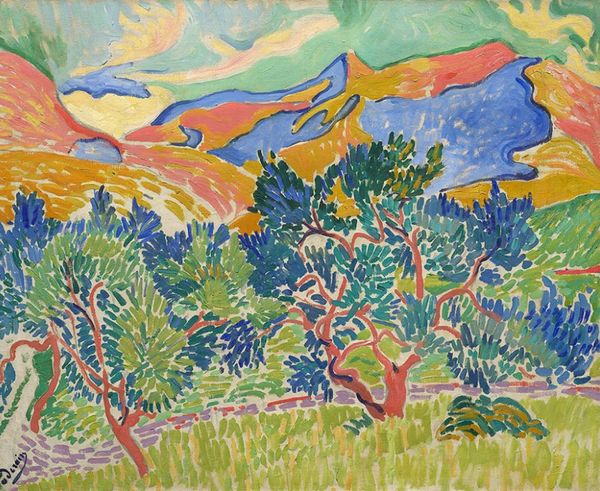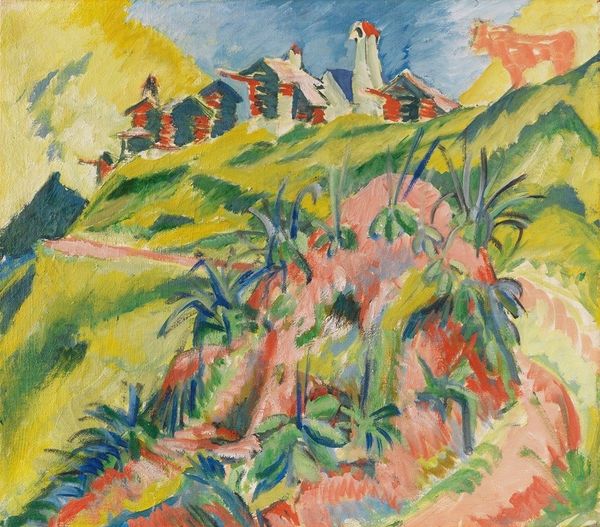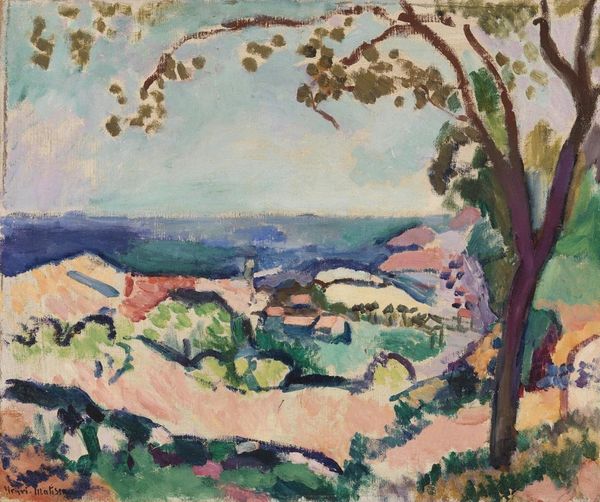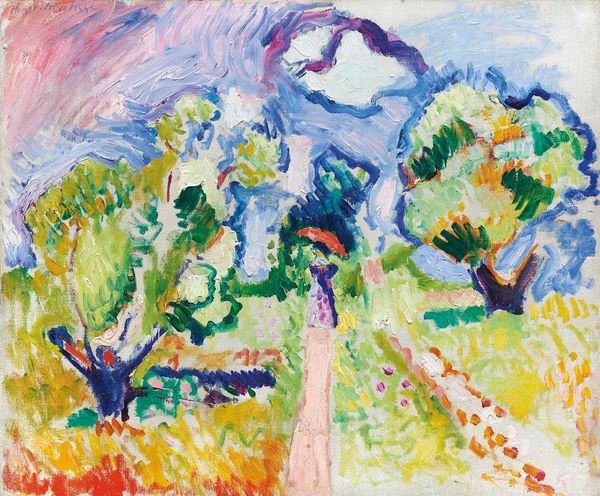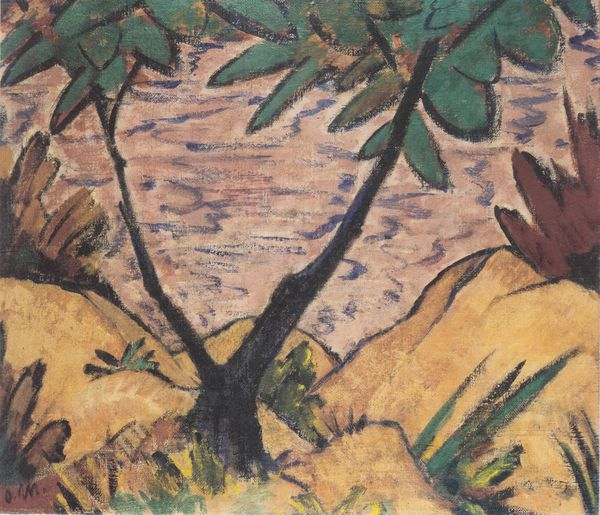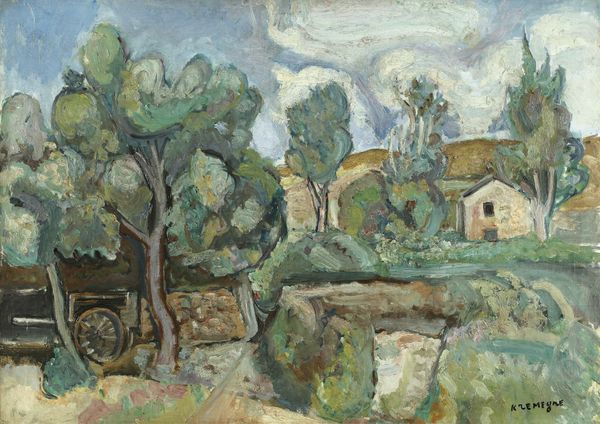
Pine Trees on Kerkyra 1917
0:00
0:00
konstantinosparthenis
National Art Gallery (Alexandros Soutzos Museum), Athens, Greece
Dimensions: 90 x 96 cm
Copyright: Public domain US
Curator: What a peaceful scene. There's such a stillness in Parthenis' "Pine Trees on Kerkyra," painted in 1917. It's almost dreamlike, isn’t it? Editor: Absolutely. The color palette is incredibly soothing; all those greens and blues seem to blend effortlessly, creating a calming visual experience. But is there more at play here than just landscape? I’m sensing some kind of coded communication about class relations, since there are people resting in the landscape itself... Curator: Perhaps! To me, it's a landscape infused with introspection. The way the brushstrokes create soft, blurred edges…almost like a memory fading into abstraction. Parthenis doesn't give us photorealistic trees; he gives us his emotional resonance of pine trees, with two enigmatic people near to the lower border of the artwork.. Editor: The very lack of distinct details is a statement. Remember the historical context: Greece during the First World War, struggling with its own identity and political upheavals. I'd argue the abstracted figures could symbolize marginalized groups, made nearly invisible by dominant power structures. What’s more, there are theories on how intimism also expresses a type of withdrawal into a world centered on domesticity, maybe an idealized space away from social structures for marginalized people to access. Curator: That’s interesting. I do feel drawn into that idealized space. Parthenis' focus on capturing light feels so…hopeful? Even with what you mentioned, it’s very evocative. I especially love how the leaves look windswept, as though even on canvas there’s always some type of nature movement in the landscape, be it material, organic or even a coded commentary... Editor: True. Parthenis, while working in this impressionistic style, almost veers into symbolism. The blurring serves as a kind of visual noise that asks: Who gets to relax in this pastoral dream? Is it for everyone, or only some? It challenges our gaze. It gives room for the reevaluation of modern power. Curator: Exactly. Even when they seem idyllic, paintings can reveal hidden social currents...thank you for offering me this new viewpoint about "Pine Trees on Kerkyra.” Editor: Indeed. There is still plenty left to unpack in the landscape tradition and the history of the visual arts.
Comments
No comments
Be the first to comment and join the conversation on the ultimate creative platform.
